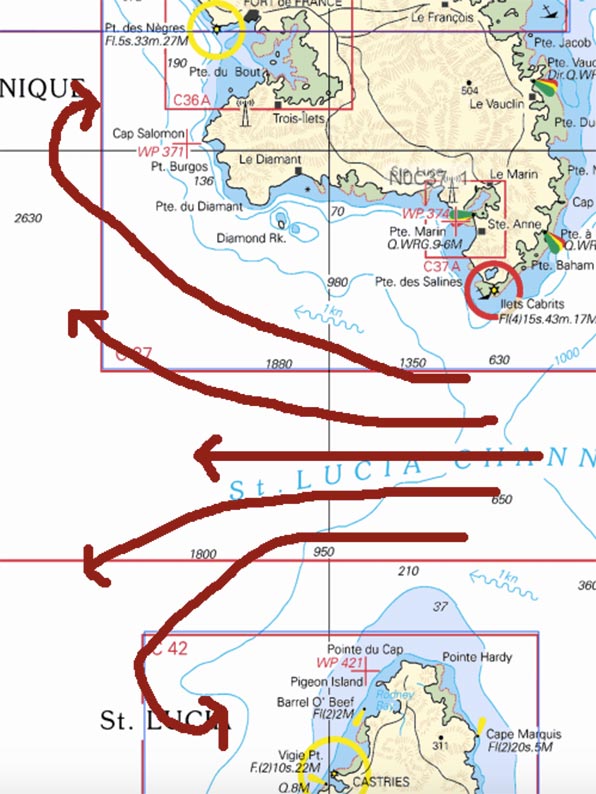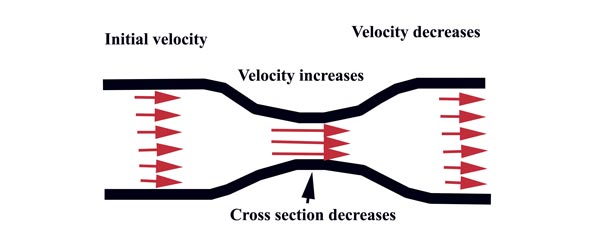Island Effect
Not long ago I responded to an inquiry on the internet from a relatively new sailor. She had been asking about sailing in the Windward and Leeward Islands, specifically about inter-island passages, and the conditions that she might expect to find along the way. What I attempted to describe to her is as follows.

It would seem that if traveling north or south, with a forecast like this, you should be able to set your sails and forget them. Unfortunately that is unlikely!
If you were to consult a website like Windguru or Passageweather before a passage, you might see a 15 knot breeze forecasted to blow from the east (typical trade wind conditions here in the Eastern Caribbean). When following the islands south or north though, it is very seldom that you would actually experience those exact conditions. Most sailors who’ve been around here a while, as a matter of course, tend to add 5 or 10 knots to the wind speed that is forecasted on those sites, but that does not tell the full story. In my experience, it works a lot more like this.
In the image below, I have drawn several arrows. The arrow in the very middle of the diagram, centered between the islands, shows that, at that point, the wind would blow from the east as forecast. If you look at the other arrows though, you’ll see how the wind tends to wrap around the islands.

When sailing south from one island to the next, what you are most likely to find in the true lee of the island is very little wind (see cautionary note below). Continuing southward, as you approach the island’s end, you will often find the breeze building, but instead of blowing from the east, it will be closer to southeast, forcing you to sail close hauled. The wind-generated waves normally also build at this time, and will typically be coming from the same direction. In some cases, albeit a bit more rare, you may even experience a light southwest wind for a short time.
As you continue south, the breeze, and the accompanying waves, will typically back until, by the time you are in the middle of the channel, you are on that beam reach that the forecast had you expecting. Continuing on in the same direction, the wind will typically back even further, beginning to wrap around the island that you are approaching. At this time you would find yourself sailing on more of a broad reach, with waves on the stern quarter. Continuing on further still, when you are fully in the lee of the next island, you will lose the wind altogether, and the waves will largely abate. This process repeats itself over and over as you move along the island chain.
What about the wind speed? Even though the space between the islands may seem quite large, it is still constricted enough to create a Venturi effect, accelerating the wind through the gap. It is because of this that the wind speed you experience in the channel is often a bit higher than what is forecast.
In addition to the above, there are currents at play here too, normally setting the boat west. For this reason, when sailing between the islands, we will often try to stay as far to the east as we can until we’re sure that we can make our intended landfall without tacking.

Note: Sometimes, when transiting the lee coast of the islands, we experience strong gusts coming down off the mountains. It is best not to become too complacent just because the wind appears very light.


Interesting stuff. Ken explained this when we made the passage from Antigua to St Croix.
Fortunately on that passage, once you cleared the leewards, you would have been free of much that I described.